How to take Pro digital notes
Research shows that taking notes is best done with a pen. And when you take notes in classes, lectures, at meetings and at conferences, using a pen helps you to remember more, process what’s being said and stay focused. So how can you take Pro handwritten digital notes?
Pro setup for taking digital notes
To take Pro digital notes, you need a device with a pen! I’m using the Surface Pro, which is an ideal device to take notes with because of detachable design and the great pen.
Step 1: Have your pen handy. On the Surface Pro the pen attaches magnetically to the left side so that it is ready when the need to take notes appears.
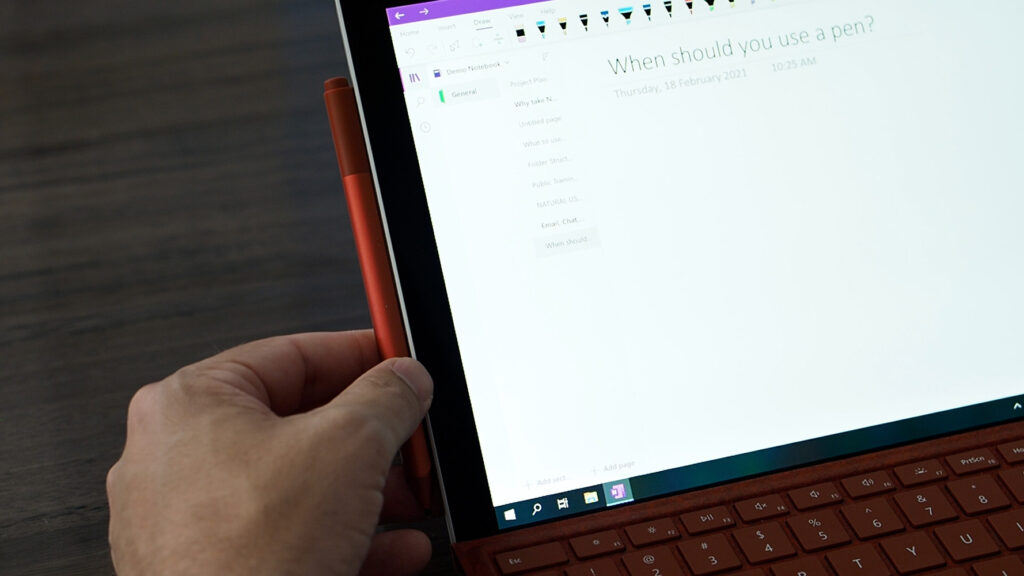
Step 2: Fold the keyboard underneath and lay the device flat. You’ll be able to rest you hand on the screen, and that gives you the leverage and fine control you need to write properly. You won’t be able to do that if you have the device standing up, so this is important. Having the device flat is a really good way to be transparent and open in a meeting, and to minimise the potential for distraction. Don’t worry, the keys on the keyboard and the trackpad are all disabled in this mode.
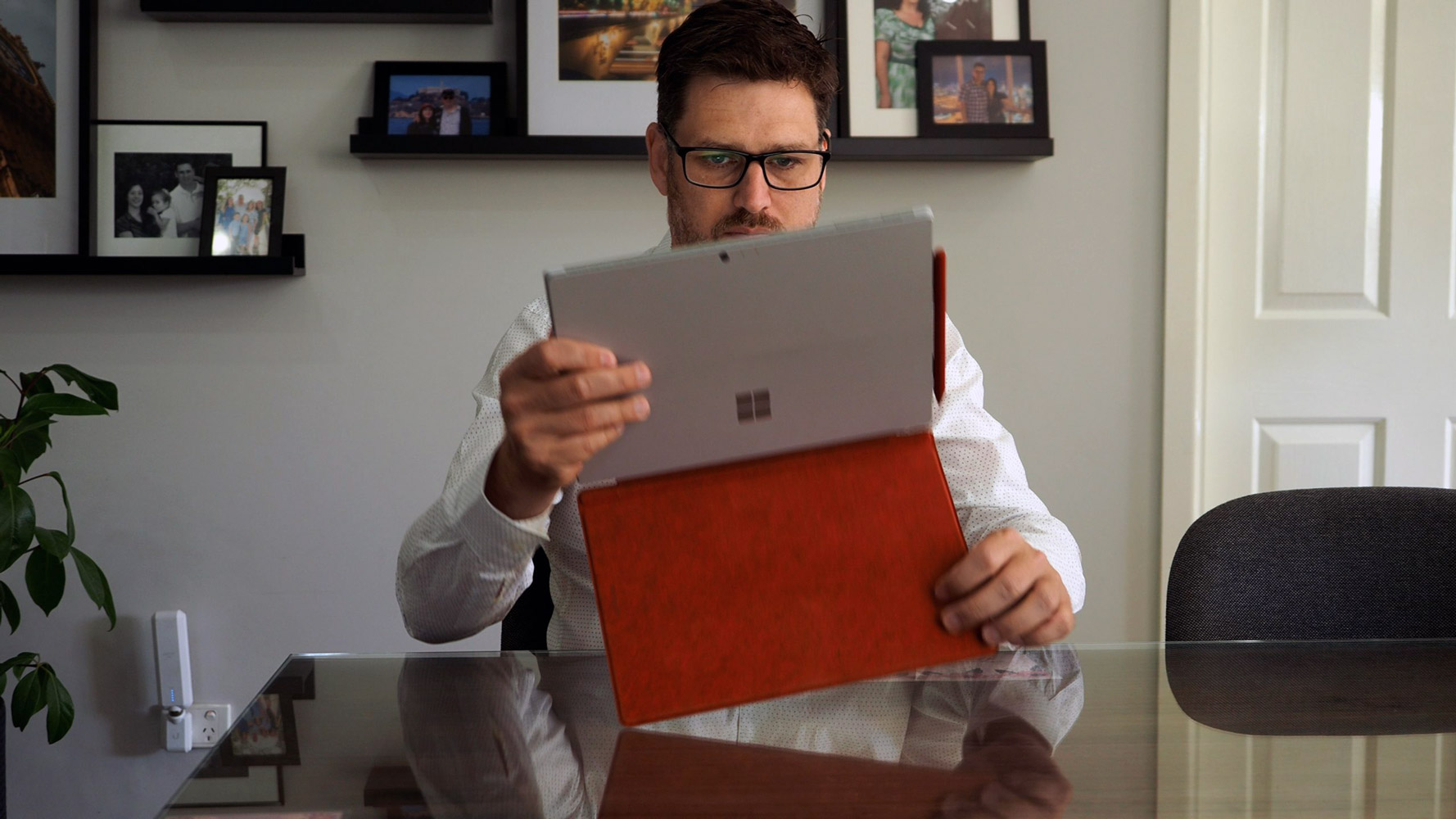
Step 3: Turn your device to portrait mode. I recommend using the device vertically, with the Keyboard folded back underneath. If you’re at a desk and you have a place to rest the Surface, you can use landscape mode. And you can throw in the kickstand to get the right angle. But the key here is don’t use your device upright for note taking. Your writing will be messy, and your arm will wear out quick.
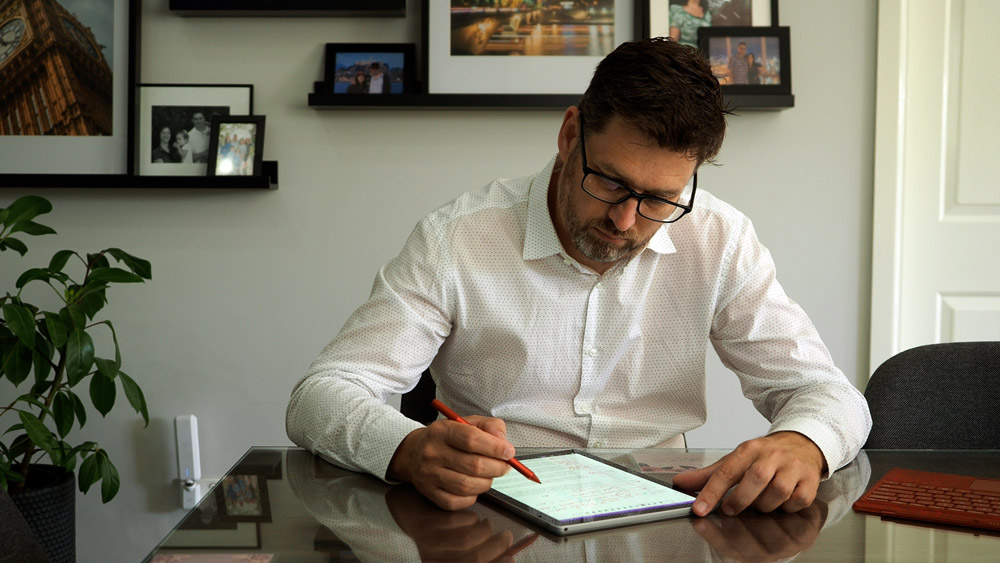
Now that we’re set up ready to take notes, the question is what app to use?
The best app for taking Pro digital notes
I’ve been taking digital notes since 2001 and I recommend OneNote. There are two versions of OneNote currently on Surface. You can use either, or both of them. In the not-too-distant future, they will effectively merge back together. For this demonstration, we’ll use the OneNote Desktop app. We’re going to use this app because it has some very helpful and unique tools built in.
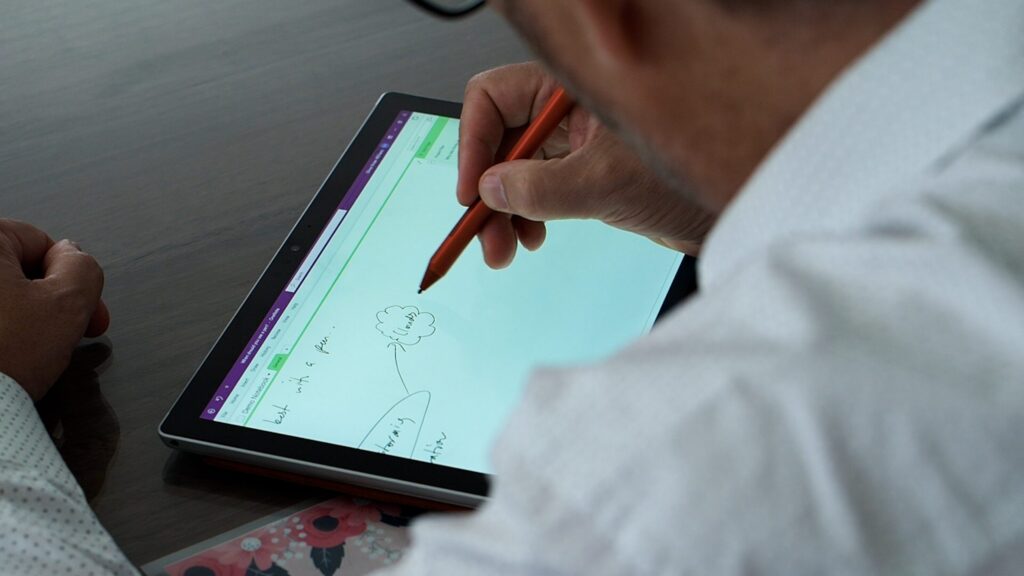
First, create a page. A page in OneNote is an infinite space that starts from the top left corner. This might be a challenging concept at first, but over time you’ll come to appreciate the unlimited space.
Second, put some lines onto your page. To add lines to your page, click on View, then Rule Lines.
Third, grab your pen and start writing! But before you do, take two more steps to minimise distraction:
1. Turn on quiet hours in Windows. This stops Windows notifications from popping up on the screen!
2. Turn your device around into the Portrait Mode. OneNote switches to full screen mode, and gives you a nice blank page to work with.
Choose a note taking method
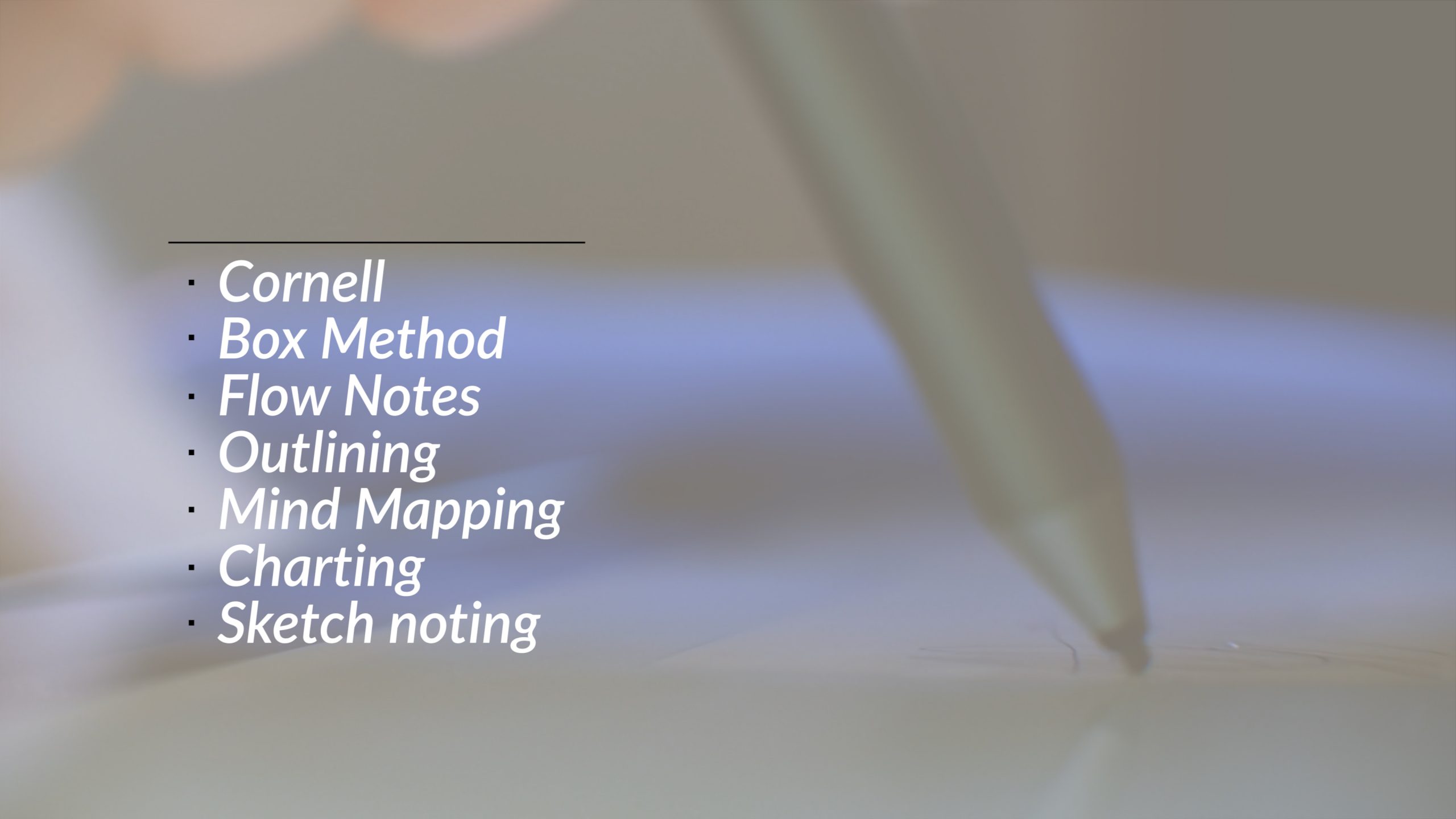
There are many note taking methods and systems that you can find online and learn about. For example, there is the Cornell, Box Method, Flow Notes, Outlining, Mind Mapping, Charting and Sketch noting to name just a few. What ever note taking method you use, bear in mind that note taking is a visual and spatial process. And taking notes on a device like Surface can really enhance the strength of visual and spatial connections to your notes.
Personally, my method varies between an outlining style and a free-flow mind mapping style. In free flow, I write down a key idea and highlight or circle it. Where I can, I might draw something to help it stand out or to describe it visually. Then I start working around it with subtopics and details that I find important.
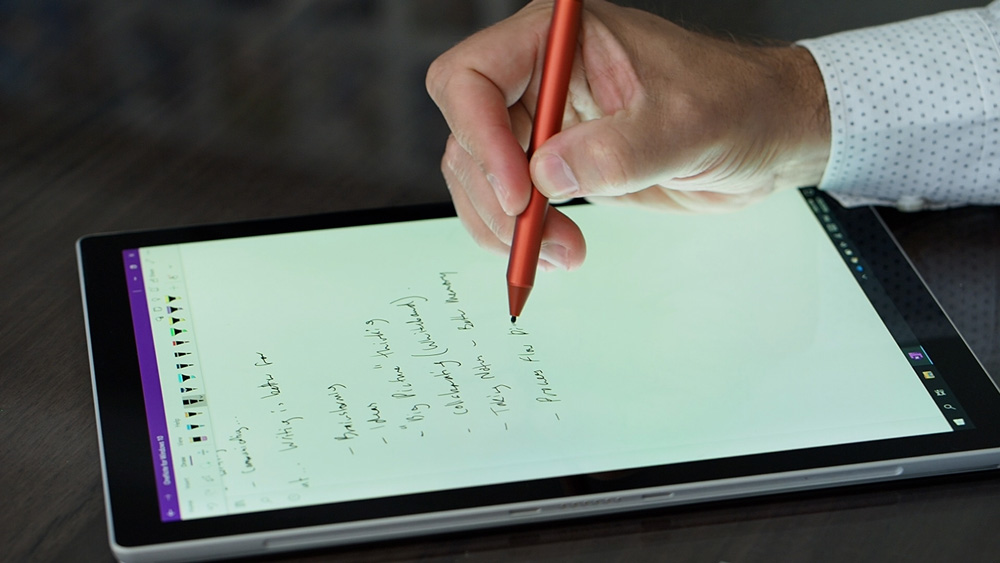
Why I choose to take digital notes
If there is a digital asset that I can use, I copy and paste that into my notes. It could be a PowerPoint slide, a page from a document, or just a picture. This way I can combine digital and hand drawn content in the one place.
Because OneNote has an unlimited canvas, I don’t have to worry about running out of room. And when I do cramp myself in, I can use the lasso button on the side of the pen to grab some content and move it to give me more space.
As I go, I’ll highlight, circle, underline or mark the things that need to stand out for me. And if I have an action, I’ll mark that for follow up. In this version of OneNote, you can flag a task directly into your Microsoft To-Do app via Outlook.
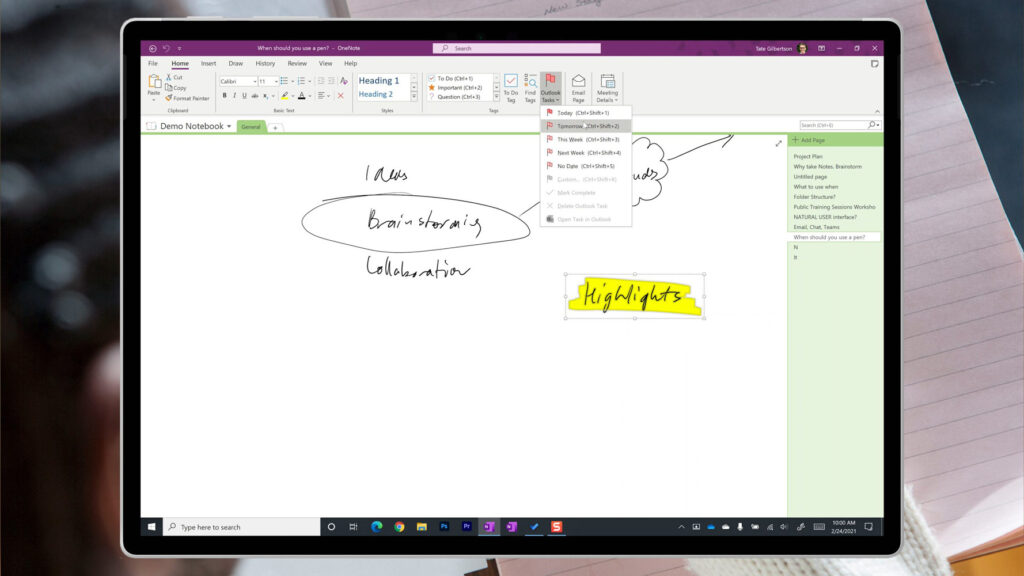
Flag an action item in your notes. It will appear in your To-Do tasks.
The task that is created automatically converts your handwriting to text and links back to the exact spot on your page that it came from. So it’s a brilliant way to keep track of action items that you collect in meetings. There’s more on this in our OneNote playlist linked above.
You need to try digital note taking
Try taking notes at your next meeting or class with the Surface Pen. It won’t feel natural at first because it is quite different to writing on paper. But over a week or two of trying you’ll become more comfortable with the device, the software and the idea of taking notes on a screen.
Don’t be discouraged if you find yourself going back to pen and paper from time to time. Taking notes on a computer is not as simple as taking notes on paper! So it takes some effort to master. And if you do find yourself taking a step back to old ways, revisit your goals for digital note taking. For example your goals might be to:
- Consolidate all of your notes in one place, accessible, searchable and shareable from anywhere on any device
- Collaborate more with remote colleagues
- Improve your memory and understanding
Those are all goals that can benefit from using a digital pen. Also, it can be motivating to remember what you can’t easily do on paper. Things like:
- Quick erasing
- Instant cut and paste
- Changing colours and options.
- Access your notes from anywhere
- Continue working seamlessly over the edge of the page
- Create instant shapes
- Combine digital and hand written content
- Search your handwritten notes
- Share and collaborate.
And it’s likely that some or all of those things could really streamline and improve the way you work. So keep those possibilities in mind, and give it another go.
As you combine note taking and other tools into your digital productivity practice, you’ll start to realise the benefits and it will become a natural part of your routine.